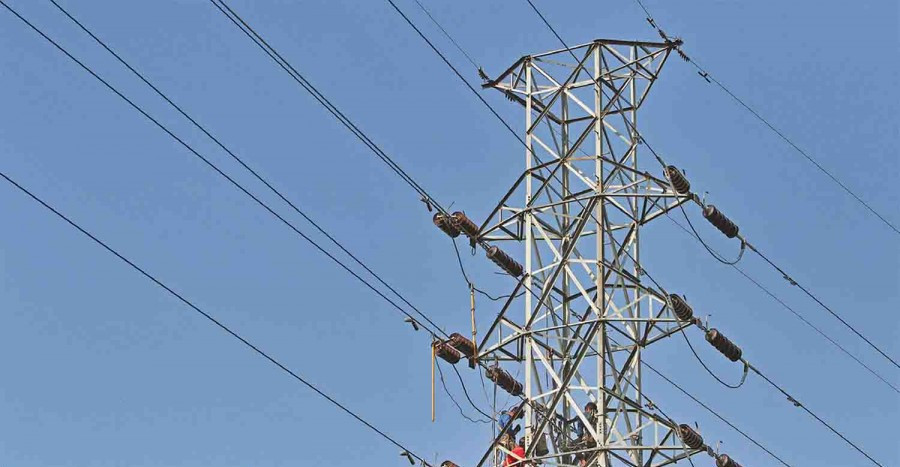Columns
Backing home-grown power
With its rich hydropower potential, Nepal can play a key role in clean energy transition in South Asia.
Prabal Adhikari
Nepal’s economy is at a crossroads with two choices on the dining plate: To rise or to ruin. Similar turmoil exists in the power sector of the country on several fronts, including statutory hurdles, infrastructural constraints, melting glaciers, unsustainable resources, declining domestic funds, federal management of the energy portfolio, security fears of the private sector for their facilities under construction, market uncertainties and delayed power sector reforms.
A way out of these hurdles would require policy priorities and executive actions aimed at home and beyond. India’s appetite for Nepal’s hydropower presents a significant opportunity for Nepal’s economy. The United States’ growing influence in Asia and India’s unstoppable rise as an economic powerhouse cannot be ignored when estimating the energy insecurity Nepal may face in the future without strategic action. However, the country can avoid futile economic pursuits only by preparing itself for a power sector boom, benefitting from US-India factors. Equally important is the highly motivated private sector in hydropower projects and the associated trade.
Private versus government
Since Nepal passed the 1992 Electricity Act, the private sector has expanded and experimented with hydropower generation. The growth of the private sector in the hydropower industry has been a successful and inclusive development model in Nepal, with many Nepali people invested in it. Moreover, the private sector’s contribution to eliminating load-shedding on the land is a commendable step.
The public utility Nepal Electricity Authority (NEA) dominates all power sector businesses in the country, including de facto “power trading,” which the existing Electricity Act does not know by its name. The NEA has been statutorily entrusted with procuring power from private generators. So far, it has signed long-term power purchase agreements with independent power producers for generation projects with a combined installed capacity exceeding 9000 MW, with around 99 percent hydro-based capacity. This shows that we are relying on the single-buyer model in the power sector despite multiple sellers in the form of generators. This undermines the principle of non-discriminatory open access for all grid users—buyers, sellers, traders, or consumers.
On the one hand, Nepal needs to establish its own electricity market, and on the other, cross-border power trading is needed to optimally manage our power surpluses and deficits. The bilateral “power purchase contracts” deal with the buying and sale of the power generated in the country. Also, some power trading companies have been incorporated in the recent past, but they, too, excepting those created by government entities, face licencing uncertainties since the Electricity Act has no explicit provision for issuing power trading licences to them, and the much-awaited Electricity Bill, which is expected to open new avenues for power trading, is pending in Parliament.
If passed without further reassessment and improvement, the new law may worsen the situation rather than introduce sweeping reforms in the power sector. If the private sector, a major stakeholder in the whole episode, is demotivated, the entire power sector might end in a dramatic crash in the future.
For example, a competitive approach to licensing hydropower projects, as envisaged in the bill, may be considered a theory that may or may not yield the desired results. In Nepal’s context, the government-made study and design before pushing the generation projects to bid for construction and operation may not be considered satisfactory enough and optimised by the prospective developers and investors for their execution.
Likewise, we can anticipate real competition only when there is the likelihood of receiving many proposals for the same generation project, and this is not going to be the case in Nepal. The private sector cannot be solely blamed for not completing the said tasks within the specified timeframe since several issues, like delays in environmental clearances and the signing of the power purchase agreement, fall within the state's jurisdiction.
The government should not be tempted to grab other undue benefits like free shares, free energy, or any financial commitments from the hydropower project developers when issuing licences for electricity generation projects. Expecting such additional benefits beyond the receipt of royalties will simply make the generation projects infeasible to develop since such criteria for the selection of bidders will ultimately increase the project cost, and a reasonable tariff from such projects cannot yield an expected return on equity to motivate the investors. The project cost is already following an upward trend attributable to many other factors, such as rising equipment costs, inflation, high interest rates, hedging costs, social and environmental costs, and extra costs for more resilient infrastructure on account of climate change.
Further, the government should never consider the electricity tariff as a financial criterion for granting the licence for a generation project, as it cannot be an entity or a body procuring electricity from the generators. A competitive tariff should be ensured through a market-driven relationship among different generators in a multiple-buyers-multiple-sellers environment.
Home-grown hydro and solar
Given its rich hydropower potential, Nepal can play an important role in the clean energy transition in the South Asian region. Moreover, the country can cut energy insecurity by installing more solar plants at appropriate locations, mitigating the intensity of the dry season power deficit for years to come.
Policymakers should focus on balancing hydro and solar, as these can reduce the volume of power imported from neighbouring countries to meet our dry season demand. Besides, shorter construction periods, smaller fund requirements, closer load centres, shorter transmission lines, improved storage technologies, and high prospects for future green hydrogen and pumped storage schemes are some of the bright sides of solar resources. We should seize the opportunity to produce home-grown energy sources. For this, the power sector needs ample state backing.




 13.12°C Kathmandu
13.12°C Kathmandu















